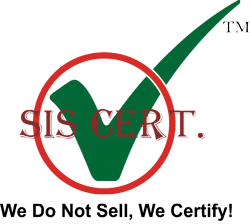ISO 41001:2018 Certification: Elevating Facility Management Systems to New Heights
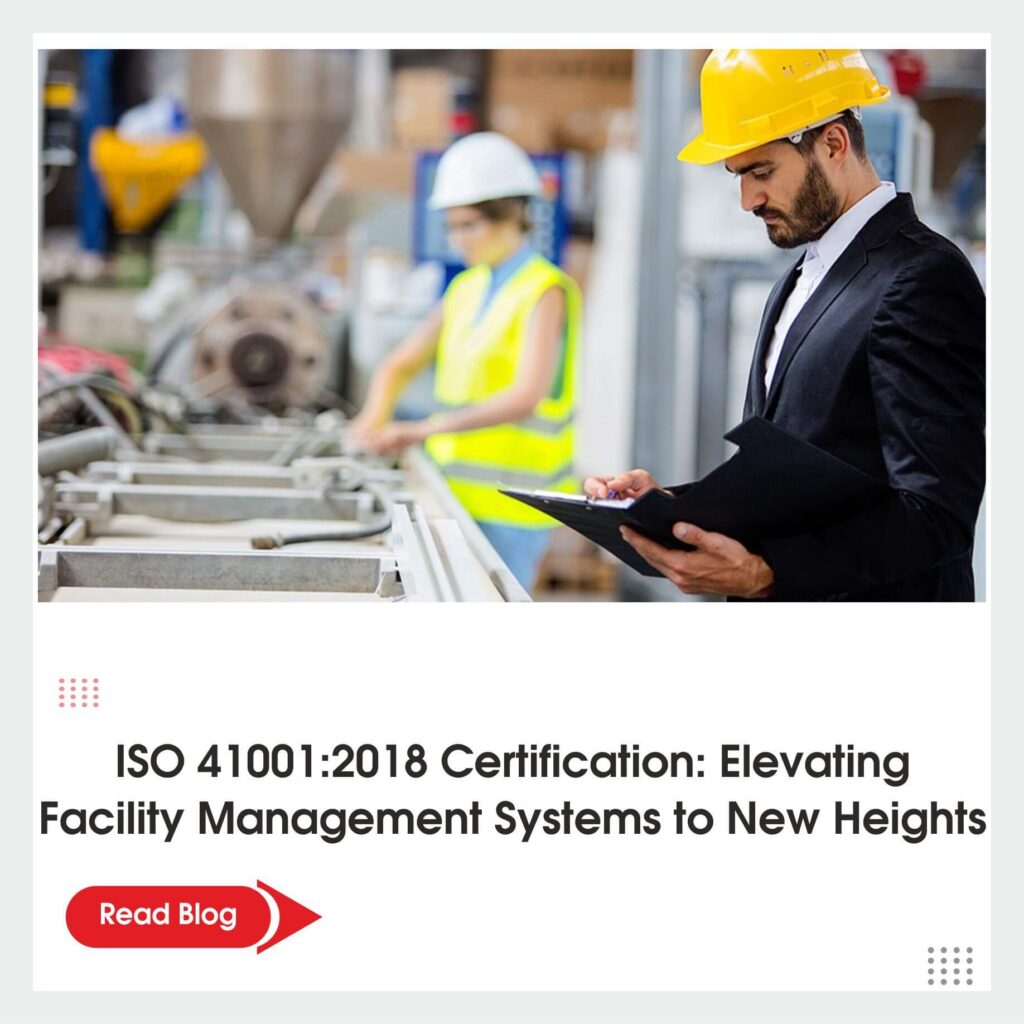
The ISO 41001:2018 certification process becomes a way of ensuring efficient and effective operation of the facility management structures. This globally acknowledged benchmark serves as the touchstone of best practices in managing facilities, not only focusing on efficiency but also sustainability and safety as well. A facility manager who follows the standards of ISO 41001, shows a clear sign of being a professional who practices excellence and constantly strives to improve their operations. Through this conciliation, enterprises will be able to improve their image, simplify their processes, and fulfil the law’s requirements with maximum effectiveness. Implementing ISO 41001 standards is necessary for office management practices to take the operations up to the desired excellent level and bring satisfaction to the occupants and other stakeholders. ISO 41001:2018 facility management provides a cutting-edge stage for industries to examine whether their management systems meet the benchmark of effectiveness and affordability. Furthermore, it teaches the update of the system, the flourish of the working process, and the stick to legal rules. By implementing ISO 41001:2018, industries can assign value to their work, for instance, high-quality products and services to their clients besides increased operation efficiency and cost-reduction. It has proved to be a very useful tool for any organisation looking to excel in Global facility management such as more advanced management operations, by the scope of the industry. The use of this standard will offer numerous advantages for industrial projects, for instance, productivity and resource management will be improved, information and command will be clear, and customer satisfaction will be provided. The Steps that Need to be Taken during ISO 41001 Certification ⮯ Through the steps which are provided below, the organization will systematically acquire and retain ISO 41001 certification to indicate dedicated effort in facility management practices. Step 1: Make sure you have a good command of the ISO 41001 basic concepts. Soak up the knowledge of the ISO 41001 and the principles of the Facility Management Systems (FMS) that it articulates. See its function, limitations, and the potential utility it will bring to your company. Step 2: Develop Backing and Support Leadership buy-in of top management level to support the ISO 41001 certification implementation. It is in this way that you can favor the allocation of funds and leadership positions in the Facility Management System. Step 3: Compile a Gap Analysis Establish your baseline—compose lists that go through your operations and match them with the relevant ISO 41001 standard requirements. Enumerate activities that your company is already in line with and possible innovations that the standard may demand to comply with. Step 4: Develop a scheme. Compose a specific plan which includes exactly the series of events of your organization implementing ISO 41001 standards. Create a job description and task division to make a management structure relevant to the project, and to make it organized and hierarchical. Step 5: Generate the Set-up Standardized Procedures Display the key processes and procedures required by ISO 41001. This will comprise a manual that describes the overall FMS structure and how it is aligned with the standard. Step 6: Training and Awareness of the Workers Train employees about the new FMS procedures and point out to them how their roles in ensuring compliance are very crucial. This move will be a guarantee that all the people in the group should be aware of their roles. Step 7: Order the FMS. Integrate what has already been documented into practice. This ranges from preventive activities such as generating an FMS maintenance plan and conducting emergency evacuation drills to ensuring consistent compliance with ISO 41001 requirements. Step 8: Conduct Management Audits Do regular internal audits to find any nonconformities as well as areas that will require you to improve over time. This measure greatly helps to sustain the necessary level of compliance for certification auditing by third-party external auditors. Step 9: Corrective Actions All discrepancies or variances noted from internal audits should be resolved. Fix those issues and adopt corrective actions for the improved Facility Management System. Step 10: Select an Accredited certification Body. Choose the qualifying and certified body for outside auditing. Make sure they are acclaimed with knowledge of ISO 41001 accreditation. Initiate agreement and proper preparations for the certification audit with them. Step 11: Undergo External Certification Audit. The certification body will carry out a comprehensive audit of your FMS to check that it fulfils the standards prescribed by ISO 41001. Show the positive results of your system as well as identify any issues. Step 12: Continual Improvement After achieving ISO 41001, work systematically at improving the overall management of the organization. Routinely modify and expand your FMS to support organizational modifications and to comply with the standard. The Impact of ISO 41001 on Sustainability and Environmental Responsibility in Facility Management ⮯ ISO 41001, or the facility management system standard, is a revolutionary step, which is mainly dedicated to facilities management study. This standard is disrupting the traditional way of managing the facilities to ensure a more sustainable and environmentally friendly future for our planet as its goal is not simply to maintain, but to elevate the state of environmental responsibility and sustainability. Sustainability is one of the core aspects of ISO 41001 that encourages its adoption. This standard is stipulated to urge facility administrators to adopt the methods of sustainability that lead to reduced waste, conserved energy, and ultimately fewer green impacts brought about by the operations. As a result, waste facilities will have more energy-efficient systems and should switch to renewable energy sources whenever available and should incorporate into their programs recycling and waste reduction. The incredible influence of sustainable well-practiced practices must be emphasized. They will give back to the world, on top of that, being a long-term gain financially to the businesses. Beyond that, ISO 41001 gives a great deal of weight to the substance of nature. The operation managers are now challenged to evaluate how the decisions they make are affecting the environment in which their business operate. This is going
Elevate Your Cosmetic Brand with ISO 22716 GMP Standards
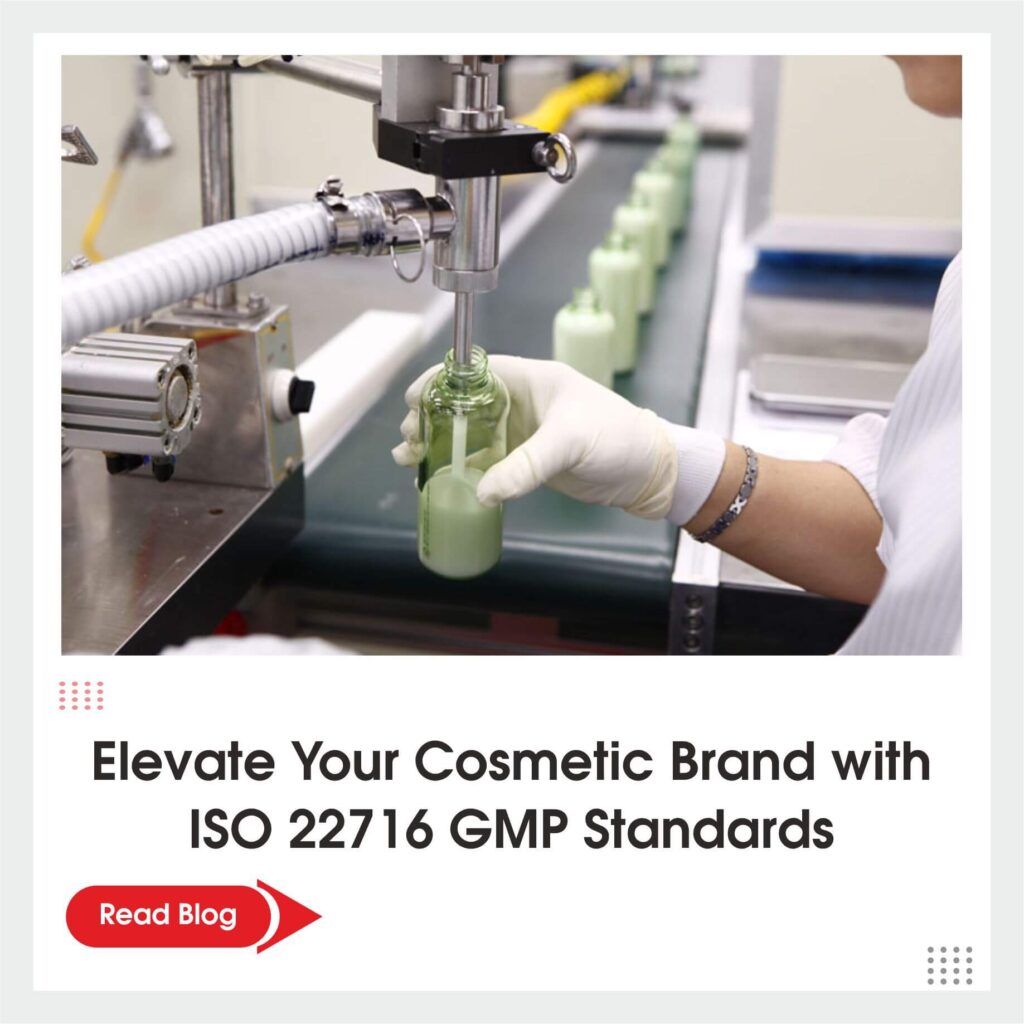
The ISO 22716:2007 standard considers the unique requirements of the cosmetic industry and has been designed for their consideration. The manufacturing, supervision, packaging, and distribution of cosmetics are the main topics of the standard. These recommendations include technical, administrative, and human resource management guidance that is both organized and useful in enhancing the quality of the final output. ISO 22716:2007 Good Manufacturing Practices in Cosmetics focuses on human, technological, and administrative elements that particularly impact product quality and contains a variety of applied consultation, working rules, and operational regulations. The goal of the ISO 22716:2007 standard is to identify actions that lead to an end product that fulfils the specified criteria, and hence product safety. Cosmetic producers can also be assured of satisfying international safety standards by adhering to ISO 22716. Demonstrating conformity with regulatory requirements across different markets, not only benefits the end-users but also promotes commerce. Importance OF ISO 22716:2007 Good Manufacturing Practice (GMP) ⮯ The International Organization for Standardization created Good Manufacturing Practices (GMP), which gives a comprehensive manual for the secure manufacture of cosmetics. ISO 22716:2007 standard was created and is being used by many countries. Under the headline, TS EN ISO 22716 Cosmetics – Good Manufacturing Practices (GMP) – Guidance on Good Manufacturing Practices, the Turkish Standards Institute (TSE) launched it in our nation. The ISO 22716:2007 standard describes a comprehensive quality management system strategy that covers the manufacturing, testing, packing, storing, and shipping of finished cosmetic goods. The ISO 9001 Quality Management System and the ISO 14001 Environmental Management System easily integrate with this standard. Advantages of Cosmetics Manufacturing Practices Under ISO 22716:2007 Good Manufacturing Practice (GMP)⮯ Ensure that the basic operational and environmental conditions needed to generate safe products are met by best industry practices. Make high-quality goods that are acknowledged and embraced globally. Obtain a competitive advantage over other market players. Make ensuring that products are safe for consumers to utilize. Naturally, businesses become more efficient in their operations as their expenses go down. EU COSMETICS GMP REQUIREMENTS ⮯ GMP, or good manufacturing practice, requirements for cosmetics form the core of the EU Regulation on Cosmetics. This law, which is intended to safeguard consumer safety, imposes stringent requirements on all European and non-European parties engaged in the supply chain of cosmetic products. Despite these legal requirements, all cosmetic products manufactured in the EU have to follow the ISO 22716:2007 standard’s Cosmetics Good Manufacturing Practices. Proof that the items are created by ISO 22716 can be provided by the ISO 22716 certificate or a declaration attesting to that fact. The following enumerates the domains for which ISO 22716:2007 stipulates certain requirements, together with their principal guidelines: Employees: employees should possess the necessary training to manufacture, oversee, and keep goods of a certain calibre. Premises: The location, layout, design, and use of the premises should guarantee product protection; allow for effective cleaning, sanitizing, and maintenance as needed; and reduce the possibility of product, raw material, and packaging unit mix-ups. Equipment: For equipment to be utilized for its original function, it must be able to be maintained, cleaned, and sanitized as needed. The equipment must be calibrated regularly in addition to being appropriately installed and cleaned. It should only be accessible and used by those who have been granted permission, and there should be enough backup procedures in place. Raw materials and packaging materials: raw materials and packaging materials that are purchased should meet defined acceptance criteria (physical, chemical, and microbiological) relevant to the quality of finished products. There should be proper measures and criteria in place for purchasing, receipt, identification and status, release, storage and re-evaluation of raw materials. The quality of water used in production should also be controlled. Production: steps should be performed at every level of the production and packaging processes to ensure that the final product has the specified qualities. Final products: The manufacturer must make sure that the products fulfill the specified acceptance criteria and are regulated using the approved test procedures before releasing them into the market. To preserve the quality of the final goods, care must be taken during storage, shipping, and return processes. Laboratory for quality control: The same guidelines that are outlined for staff, space, tools, subcontracting, and paperwork should also be applied to the lab. For materials to be released for use and products to be released for shipment, only when their quality meets the necessary acceptance criteria, the quality control laboratory must make sure that all relevant and necessary controls are carried out within its activity concerning sampling and testing. It is necessary to establish how a product that does not meet specifications is treated. Wastes: They need to be disposed of promptly and hygienically. Subcontracting: When it comes to subcontracting operations, a formal contract that is established, mutually confirmed, and controlled by both the contract giver and the contract acceptor is required. Deviations: Corrective action should be conducted after deviations have been found and enough data has been gathered about them. Recalls and complaints: The factory should evaluate, look into, and follow up on any concerns about the items that have been brought to their attention. Upon decision-making regarding a product recall, the necessary actions ought to be conducted to conclude the recall and execute the corrective measure. The procedure for handling complaints in contracted operations should be agreed upon by both parties. Change control: authorized staff must approve and carry out modifications that may have an impact on the product’s quality and do so only after gathering enough information. Internal audit: GMP implementation and status should be kept track of. Corrective measures should be suggested if needed. Documentation: An essential component of GMP is documentation. Depending on its organizational structure and product offerings, every business should have its document management system created, planned, implemented, and maintained. To avoid information loss, misunderstanding, etc., the documentation’s goal is to define the specified GMP activities.
Achieving Compliance: A Guide to ISO 41001 Non-Conformity
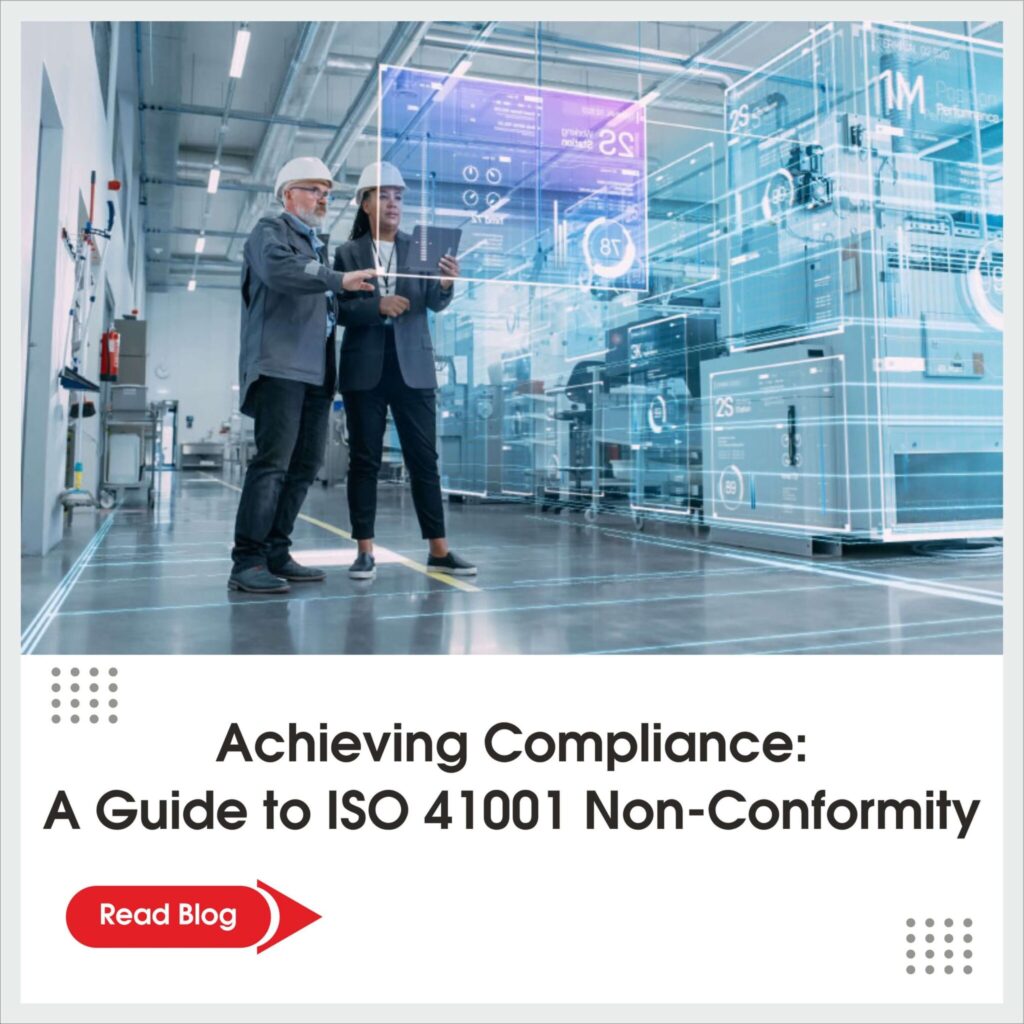
ISO 41001 is a global standard certificate by the International Organization for Standardization that presents guides for facility management. It follows the same scheme as other ISO standards, including ISO 45001 (Occupational Health and Safety Management Systems) and ISO 50001 (Energy Management Systems), with the core text, definitions, and terms kept intact. The purpose of the standard is to ensure that organizations demonstrate lean FM, and consistency when defining Facility Management system requirements and sustainability. It standardizes the notation and its requirements to serve all kinds of organizations. What is ISO 41001:2018 nonconformity? ⮯ ISO 41001 Non-Conformity is the process where an organization’s FM system does not meet the requirements of ISO 41001. The non-conformities can be originated from several sources including inadequate processes, not complying with regulations or failure to meet the pre-defined output performance criteria. Corrective or preventive measures are unavoidable in the pursuit of the certification of ISO 41001 or even the maintenance of compliance with the standard. Through appropriate control of non-conformities, organizations can advance their facilities management actions, enhance operational effectiveness, and manifest a willingness to meet the international parameters of facility management. Non-conformities in ISO 41001 can occur due to various reasons. Here are some of the main ones: ⮯ The ISO 41001 certification audits are a dynamic procedure that allows organizations to show their attitude to practising correct facility management. During these audits, certified auditors comprehensively audit the entire facility management system of an organization to confirm its conformity with the ISO 41001 standard. As the certification is taken to its perfection level, auditors may discover non-conformities that reflect the fact that the organization’s practices deviate from the standard’s requirements. There is a usual non-conformity during the ISO 41001 certification audit, and that is a lack of proper documentation. Standard highlights the need for documenting the procedures, policies, and processes that are within facility management. Auditors regularly discover instances where organizations do not have proper documentation of their systems compromising the security of the systems and leading to possible inefficiencies. Not following these standards can be a timely and valuable learning event for organizations to improve their documentation practices and make sure that all required information is accurately recorded. Besides, the incessant non-compliance noted when undergoing ISO 41001 certification audit is not reviewing and updating the facility management system. The standard dictates that organizations constantly and continuously keep reviewing and assessing their processes to identify areas of improvement. Auditors could find situations wherein organizations have not been doing regular checks or have not updated accordingly. This non-conformity means that it is extremely critical to evaluate the facility management system from time to time and make any adjustments that are needed to see continuous development. It’s crucial to remember that every organisation is different, and the precise causes of non-conformities might vary greatly. An extensive internal audit can aid in locating instances of non-compliance and serve as a foundation for corrective efforts. TYPES OF NON-CONFORMITIES ⮯ Major Non-Conformity: Major non-conformities are serious deviations from the requirements of a standard or management system. They often pose a significant risk to the organization’s objectives, compliance, or product/service quality. Major non-conformities can result in certification suspension or withdrawal in the case of ISO certification. Minor Non-Conformity: Minor non-conformities are less severe than major ones but still represent a deviation from the standard or management system’s requirements. While they may not pose an immediate or significant risk, they should be addressed to ensure compliance and continuous improvement. Observation: Observations are findings made during an audit or assessment that are not classified as non-conformities. They are typically used to report areas where the organization’s practices, processes, or documentation deviate slightly from the requirements of the relevant management system standard. The purpose of reporting observations is to bring attention to areas where improvements or adjustments could be beneficial for the organization. Opportunities for Improvement (OFI): These are specific areas within the organization’s processes or practices where enhancements or optimizations can be made. These areas may not necessarily be deviations from the standard’s requirements, but they represent chances to improve efficiency, effectiveness, or performance. Ways to address ISO 41001 non-conformities ⮯ A structured procedure that includes finding, assessing, and correcting the non-conformities, as well as taking preventative action to make sure they don’t happen again, is required to deal with ISO 41001 non-conformities. These are the general procedures:- Identification of Non-Conformity: Finding the non-conformity is the first step. Internal and external audits, as well as frequent monitoring and measuring of environmental performance, can help with this. Record the Non-Conformity: The non-conformity should be noted as soon as it is discovered. The record should contain information on the nonconformity nature, how it was discovered, who found it, and when and where it occurred. Evaluate the Non-Conformity: The non-conformity must next be evaluated to determine its source and consequences. This entails determining the source of the non-conformity and evaluating any potential environmental effects that resulted from it. Correct the Non-Conformity: The organisation should take steps to address the non-conformity after fully comprehending its origin and effects. Depending on the non-conformity’s nature, this may entail fixing machinery, changing processes, or retraining employees. Preventive Action: The organisation should work to avoid recurrence in addition to rectifying the non-conformity. This might entail changing procedures, upgrading employee training, or stepping up monitoring and measurement. Follow-Up: After corrective and preventative measures have been implemented, the organisation should check in to make sure they were successful in eliminating the nonconformity and preventing a recurrence. Review and Improvement: Regular reviews of the entire procedure are necessary to spot areas for development. This might entail strengthening the follow-up procedure, the efficiency of remedial and preventative measures, or the process for finding non-conformities. Documentation: It’s crucial to keep detailed records during this procedure. This covers the detection, assessment, and rectification of non-conformities as well as any preventative measures implemented. This paperwork can be consulted in the future and used to prove ISO 41001 compliance in audits.
What is ISO 13485 for Medical Devices?
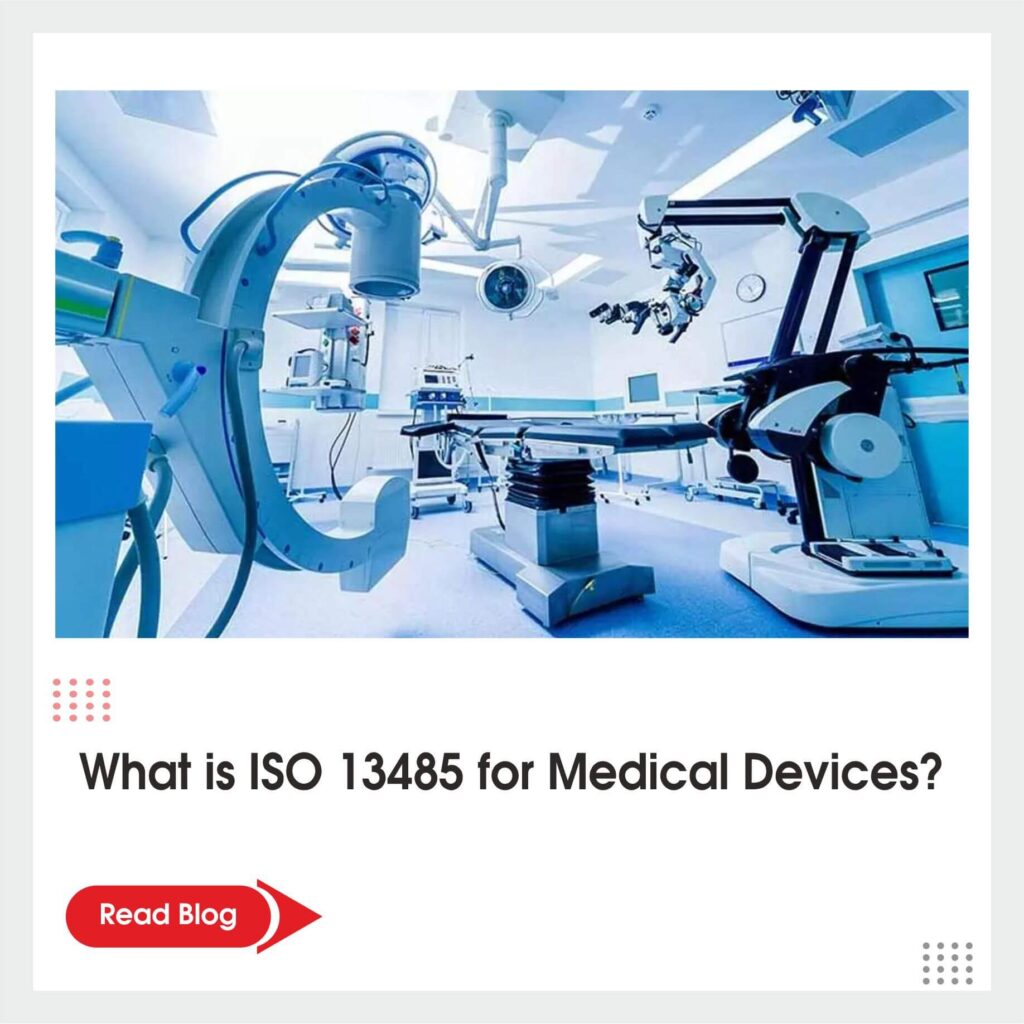
The Medical Industry forms a very significant part of the economy. However, the medical device industry is the next big emerging market worldwide that helps people fight odd health conditions and make life easy and comfortable. When it comes to medical devices, quality and safety are crucial. Manufacturers and suppliers follow strict guidelines to guarantee their products meet stringent quality and legal criteria. ISO 13485 standard is one such standard that addresses medical device quality management systems (QMS) for medical devices. What is ISO 13485:2016 Certification? ⮯ ISO 13485 is the primary Quality Management System (QMS) standard for medical devices, and various nations have their laws. The Food and Drug Administration (FDA) regulations for medical devices harmonise with ISO 13485 in the United States. The most recent version, released in March 2016, is ISO 13485:2016. The entire life cycle of a medical device is covered by ISO 13485:2016, including design and development, manufacturing, distribution, storage, installation, and servicing. It also includes providing related services like technical assistance or designing and developing. ISO 13485: A specific standard for medical devices based on QMS ⮯ An organisation utilises a quality management system (QMS) to plan, implement, monitor, and improve its performance to meet its goals. QMS standards are collections of policies, procedures, processes, and resources. It helps an organisation in the following ways: It establishes a systematic and consistent approach to managing its activities and processes with the help of a QMS built on ISO 13485:2016. It showcases that the organisation is capable of offering connected services and safe and reliable medical equipment. It meets the needs and expectations of the consumer and makes them happier. It respects relevant legal regulations and makes it easier for people to access the market. It helps organisations to determine and take advantage of opportunities and dangers. It enhances both an organisation’s overall performance and QMS constantly. Importance of ISO 13485 Certification for Medical Device Industry ⮯ ISO 13485:2016 standard is important for an organisation due to the following reasons: ISO 13485 contributes to the safety and efficacy of medical devices and associated services. Moreover, the certification provides a systematic approach for organisations to implement appropriate quality control and ongoing enhancement. ISO 13485 standard helps organisations to adhere to relevant regulatory and international standards concerning medical devices. The standard also provides a comprehensive structure for organisations to maintain compliance with the regulations and make audits and inspections easier. Five key elements of ISO 13485 standard ⮯ Quality Management System Management Responsibility Resource Management Product Realisation Measurement, Analyses, and Improvement Similarities between ISO 9001 and ISO 13485 Certification ⮯ ISO 9001 and 13485 standards help businesses in implementing a quality management system. The two standards emphasise conducting risk assessments to minimise potential threats and errors in the management system. ISO 9001 and 13485 standards use the effective PDCA cycle, sometimes called the Plan-Do-Check-Act cycle, to implement the principle of continuous improvement. The two standards focus on developing adequate infrastructure and competency for delivering quality products. ISO 9001 and 13485 standards require an organisation to identify the errors and shortcomings in the business operations to produce high-quality goods. Conclusion ✅ Organisations must adhere to ISO certification 13485:2016 for medical device quality management systems. The requirements of ISO 13485 enable the organisation to create and uphold a robust quality management system to deliver safe and effective medical devices to ensure customers’ safety and well-being. Organisations can improve customer satisfaction, reduce risks, and show dedication to achieving the desired goals and objectives.
A Step-by-Step Guide to Mastering Capability Maturity Model Integration (CMMI) Level 3

Obtaining CMMI (Capability Maturity Model Integration) Certification offers the optimal method for demonstrating a business’s reliability and dedication to its clients and customers! Information Technology (IT) Companies attribute success to producing high-quality products and adhering to a well-structured procedure that guarantees ongoing improvement. However, this is where the Capability Maturity Model Integration (CMMI) comes into the picture; it helps an organisation drastically improve its processes and systems by becoming CMMI Level 3 certified. CMMI Level 3 is the third level of the maturity model and is a critical achievement for businesses to demonstrate their commitment to providing high-quality goods and services. Obtaining this CMMI accreditation creates a positive and professional image for software and technology organisations. What is Capability Maturity Model Integration (CMMI) Certification? ⮯ CMMI (Capability Maturity Model Integration) is a widely known framework for process improvement that helps organisations improve business operations and security controls. It provides a comprehensive process roadmap to enhance the company’s performance and attain optimal results. Organisations that effectively implement well-defined business processes can achieve CMMI (Capability Maturity Model Integration) certifications. Organisations with CMMI certifications demonstrate their dedication, determination, effectiveness, and competence. They hold significant value and global recognition among customers and partners. What are the 5 Levels of Capability Maturity Model Integration (CMMI) Certification? ⮯ International organisations can get accredited by the CMMI Institute and receive CMMI certificates. Under the Capacity Level and Maturity Level, there are various certification levels. The first tiers till CMMI (Capability Maturity Model Integration) Level 3 within the CMMI group are listed here. Capability Maturity Model Integration (CMMI) Level 0: An organisation with capability level 0 has not yet established a well-thought-out practice area. Capability Maturity Model Integration (CMMI) Level 1: An organisation that has begun to improve its operations at the beginning level is represented by capability level 1. Capability Maturity Model Integration (CMMI) Level 2: An organisation that adheres to a straightforward but efficient practice area plan with well-defined procedures is represented by capability level 2. Capability Maturity Model Integration (CMMI) Level 3: Organisations that set end goals by adhering to established industry standards are at capability level 3. Maturity Levels Within Each Capability Maturity Model Integration (CMMI) ⮯ Maturity Level 0 denotes an organisation that has not yet successfully finished a project. The first maturity level, or Maturity Level 1, denotes an organisation that has not fulfilled its goals or deadlines. An organisation at Maturity Level 2 has unrelated tasks in the execution phase. A company at Maturity Level 3 employs a conventional strategy. This organisation meets deadlines while overcoming recurring problems. An organisation at Maturity Level 4 employs a data-driven strategy to achieve the project’s final objectives. An organisation at Maturity Level 5 has demonstrated ongoing improvement. It indicates that it has changed more quickly and effectively. Benefits of Capability Maturity Model Integration (CMMI) Level 3 Certification ⮯ Enhanced performance quality: An organisation with CMMI accreditation has established processes. It can deliver excellent results. Reliable delivery: Organisations with CMMI Level 3 certification include established and meticulously recorded protocols. It guarantees consistent and dependable product and service delivery. Lower risk:Capability Maturity Model Integration (CMMI) Level 3 certified businesses have established proactive measures to manage risks. As a result, clients feel more confident in their ability to provide the intended results. Boost productivity: Businesses must streamline their workflow and operational procedures to receive this accreditation. It enhances overall productivity. Conclusion ✅ A carefully thought-out and implemented process improvement strategy that includes gap analysis, implementation, and formal assessment is necessary to achieve certification. Nonetheless, the advantages of obtaining CMMI (Capability Maturity Model Integration) Level 3 certification, like enhanced productivity, superior quality, and a competitive edge, make the effort valuable. Success in the software development business will largely depend on an organisation’s ability to change and adapt to shifting industry norms and customer expectations. In this regard, CMMI Level 3 accreditation will be essential. Tags
Understanding GDPR Guidelines: Best Practices for Data Protection
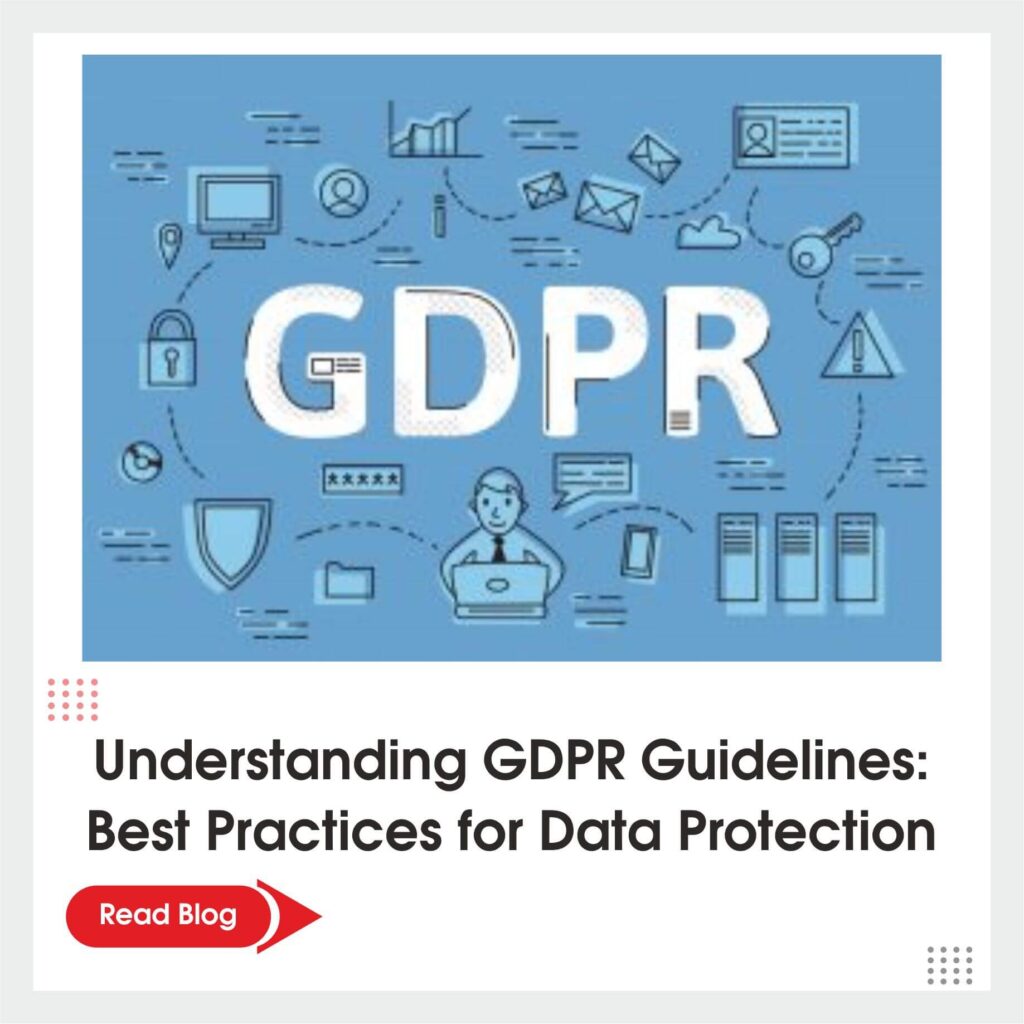
Legislation pertaining to digital privacy, known as the General Data Protection Regulation (GDPR), governs how businesses gather, utilize, and protect the personal information of EU citizens. Personal data transfers outside of the European Union are likewise governed by the regulations. Whatever personal information about EU individuals is stored, whether inside or outside the EU, will be subject to the GDPR. Firms must be aware of and prepared for the new regulations because the majority, if not all, process personal data, whether about customers or employees. The GDPR law defines personal data as any information identifying a specific individual, including name, photograph, email address, bank information, updates on social networking websites, location information, medical data, and computer IP address. Some Basic Rights of GDPR Right to access – This means that individuals may ask to see their data and find out how the company utilizes it once it has been gathered. The company is required to provide a free electronic copy of the personal data upon request. Right to be Forgotten – If a consumer no longer wants to be a client, they can ask for their data to be deleted or withdraw their permission for a business to use it. Right to data portability: Individuals are entitled to the freedom to switch service providers without losing their data. It also has to be finished in a way that is machine-readable and widely recognized. Right to be informed – This covers any data that companies may acquire, and people have the right to know before data acquisition. To allow data collection, consumer consent must be sought clearly. Right to correction – This ensures that individuals can have inaccurate, incomplete, or out-of-date information amended. Right to limit processing – People are entitled to ask that their data not be processed. Their record could be retained even if it isn’t in use. Right to object – this covers the person’s ability to stop their personal information from being processed for direct marketing purposes. This criterion cannot be waived, and processing of the request must stop as soon as it is received. In addition, people have to be informed of this directly at the beginning of every contact. Notification right – When someone learns of a data breach that exposes their personal information, they are entitled to notification within 72 hours. Data Protection Principles Lawfulness, fairness and transparency – The first principle, which highlights complete transparency for all EU data subjects, maybe the most significant. Businesses that collect data need to be transparent about their motivations and intended uses. Organizations must respond quickly when people ask questions about how their data is processed. When collecting, utilizing, and revealing data, the law must be observed. Purpose limitation – Organizations must have a clear and justified purpose to gather and use personal information. The data should only be processed for the objective for which it was collected and acquired unless the data subject has given specific consent. When processing is done for historical, statistical, scientific, or public archiving, a bit more wiggle room is allowed. Data minimisation – Compliance with the General Data Protection Regulation (GDPR) mandates that data be “sufficient, pertinent, and restricted to what is essential concerning the objectives for which they are handled.” Put differently, companies should only retain the absolute minimal amount of data required to achieve their objectives. Organizations must do more than just collect personal data in case it comes in handy later. They are most likely breaking the law if they are keeping more data than is necessary. Accuracy – Truthfulness, applicability, and timeliness are required for personal data. This means that businesses should regularly review the information they hold about specific persons and update or delete any inaccurate information as appropriate. Within 30 days, individuals can request that inaccurate or lacking data be deleted or rectified. The information will be made simpler, improving compliance and ensuring that firm records are accurate and current. Storage limitation – Personal data should be deleted or destroyed if it is no longer required for the purpose for which it was collected unless there are still valid grounds to retain it. The GDPR makes no mention of how long you should keep personal data. Your business will have to make this decision based on the grounds for processing. Database cleansing organizations must have a review process in place to ensure adherence. There are a few exceptions to the rule that says you cannot save personal data for future use, as in the case of study, statistical analysis, or archiving. Integrity and Confidentiality – Only safety is covered by this principle. To secure the personal information it has, your business must ensure that the appropriate security measures are in place. There may be security against internal hazards such as unauthorised usage, unintentional loss, or damage, in addition to protection against external threats like malware, phishing, and theft. Your systems, personnel, and services might be disrupted by inadequate information security. The GDPR requires businesses to put in place suitable security measures to reduce risks related to the data they handle, even though there isn’t a “one size fits all” solution. Accountability – The new GDPR principle states the need for enterprises to show that they have complied with the prior principles and they are responsible for the data they own. An organization is liable to provide the pieces of evidence of the actions they have performed to show that they are GDPR compliant. Analyzing the methods utilized currently Designating a Data Protection Officer Making an inventory of one’s data Getting the relevant consent Conducting Impact Assessments on Data Protection Companies may guarantee compliance with the GDPR by following these guidelines while designing, implementing, and running their operations. Conclusion ✅ Lastly, Businesses which are developing must use the General Data Protection Regulation and abide by it (GDPR). The General Data Protection Regulation (GDPR) places a heavy emphasis on individual rights and the proper use of personal data, along with
ISO 21001 Continuous Improvement in Education Industry: Leveraging ISO 21001:2018 for Ongoing Growth
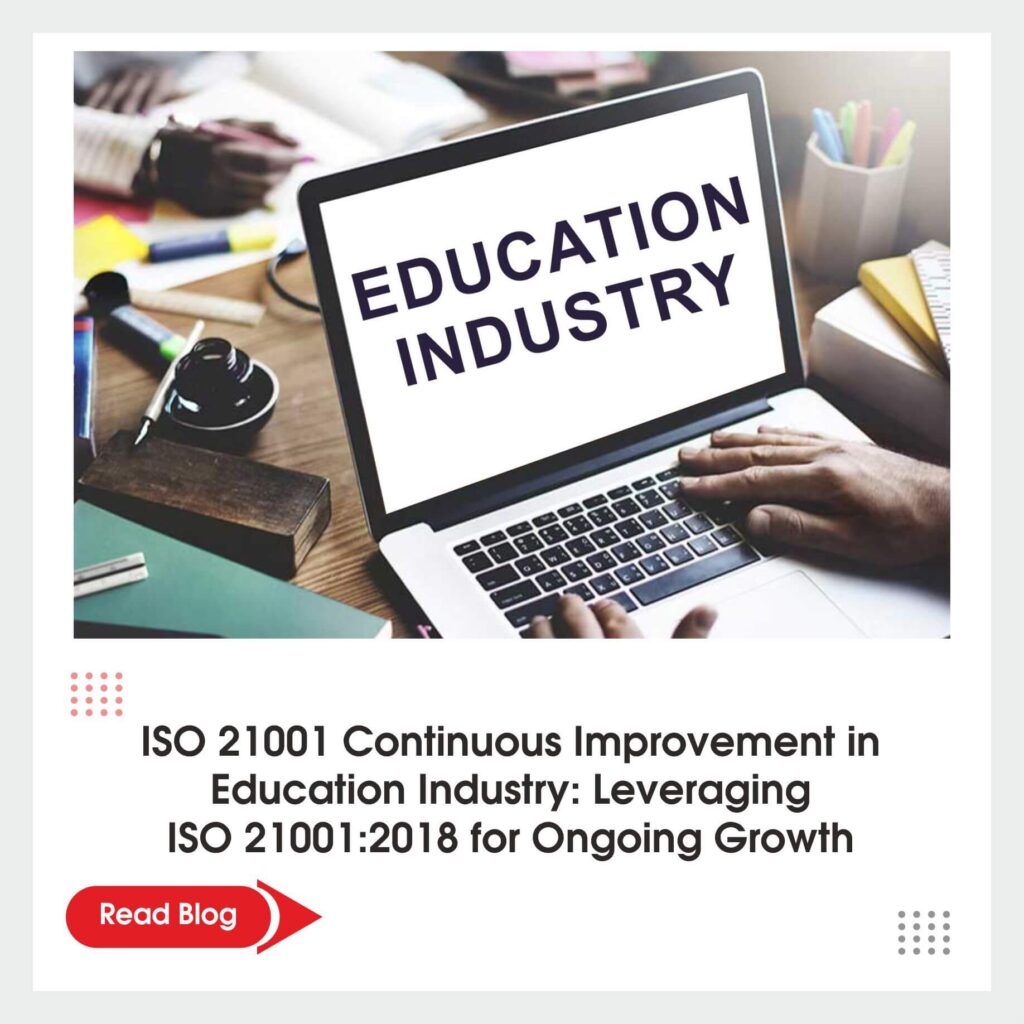
Introduction: Understanding the Importance of Continuous Improvement in Education ⮯ In every nation, education is the foundation of growth. In addition to altering people’s view of the outside world, it plays a significant part in bringing about good change by improving people’s thought processes and assisting them in discovering their passions. As a result, rather than being compromised, educational quality should always be improving and growing. ISO 21001 is a set of standards that apply to all educational organisations, regardless of size, kind, or location. To guarantee optimum compliance, the standard is particularly created for educational companies, considering elements such as complexity, maturity, and strategic direction and policies. An educational organization must be accredited with a quality management system, preferably based on the internationally known ISO 9001 standard, to fulfil the ISO 21001 requirement. The goal of ISO 21001 is to increase educational quality and student experience. As a result, the standard was created to apply to any educational organization, regardless of size or sector. It applies to institutions of higher learning, vocational training facilities, and e-learning services. ISO 21001’s purpose is to improve learning outcomes for learners. The Role of ISO 21001:2018 in Driving Continuous Improvement in Educational Institutions ISO 21001:2018 is critical in promoting continual improvement in educational institutions. Institutions may verify that they are offering high-quality education and addressing the requirements of their students by applying this internationally recognized educational standard. Its emphasis on quality management in education is one of ISO 21001’s main advantages. Establishing, implementing, maintaining, and continuously improving educational management systems is made easier for institutions with the help of this framework. Their activities become more effective and efficient overall as a result of this. The implementation of ISO 21001 facilitates the identification and resolution of issues that require improvement in educational institutions. Managing relationships, resources, and procedures inside the organization, promotes a methodical approach. Students’ outputs are enhanced, decision-making becomes more effective, and responsibility rises. Additionally, ISO 21001:2018 encourages educational institutions to have a continuous improvement culture. It motivates them to examine their procedures and key performance indicators regularly to spot areas that might need improvement. Adopting this standard would allow institutions to show that they are dedicated to fulfilling learners’ changing requirements and offering high-quality instruction. Key Elements of ISO 21001:2018 that Support Ongoing Growth and Development ⮯ ISO 21001 is a game-changing standard that provides a framework for educational institutions to improve their performance while also ensuring continual growth and development. The major aspects of ISO 21001 are intended to assist schools and other learning institutions in meeting their objectives and providing high-quality education. One of the most crucial components is educational leadership, which highlights the necessity of great leadership in promoting continual improvement and innovation. Educational institutions may establish a great learning atmosphere, engage their personnel, and inspire students to attain their full potential with excellent leadership. Schools may build an excellent culture and enable their stakeholders to participate in the institution’s continued growth and development by applying ISO 21001 principles. The learner-centered approach is another essential component of ISO 21001 standards. This implies that to provide students with individualized and fulfilling learning experiences, educational institutions should put their students’ needs and expectations first. Schools may better identify their specific requirements and modify their teaching strategies to fulfill them by putting the student at the heart of their operations. This component emphasizes how crucial it is for students to participate in decision-making processes and feel empowered to take charge of their education. Schools may establish a welcoming and encouraging learning environment that fosters student achievement and well-being by implementing the principles of ISO 21001. ISO 21001 highlights the significance of continuous improvement in addition to learner focus and educational leadership. This part pushes academic institutions to assess their performance regularly, pinpoint areas that require development, and put into practice practical plans to improve operations. Schools may cut down on inefficiencies, simplify procedures, and consistently improve the quality of their educational offerings by implementing a methodical approach to quality management systems. The institution itself gains from ISO 21001’s continued support for growth and development, and the education industry as a whole also gains from this. A blueprint for success in the quickly evolving world of today is provided by ISO 21001, which emphasizes essential components such as leadership, learner focus, and continuous development. The Impact of Continuous Improvement on Students’ Learning Experience and Outcomes ⮯ Continuous improvement in education is a key process that serves to guarantee that children receive the best education possible. This technique entails continuous reviewing and improvement in teaching methods, curriculum, and learning environments to find areas for improvement and make changes to improve student learning results. Continuous improvement is fundamentally about always striving for perfection. It necessitates the establishment of objectives and making improvements as and when required to meet their goals. This type of approach is very significant in education. There are several benefits to exercising a continuous improvement strategy in education. One of the most significant is that it helps children get a high-quality education that boosts their confidence and prepares them to work for their goals. Teachers will get up to date with the latest methods and research by regularly keeping an eye on the teaching techniques and curriculum. Fostering an innovative and collaborative culture among educators is another advantage of continual development. Continuous improvement has the potential to foster a community of educators committed to giving children the best education possible by empowering them to take prudent risks, try out novel strategies, and share their triumphs and disappointments. The promotion of equity in education is arguably the most significant benefit of continuous improvement. Through continuous assessment and improvement of teaching strategies and curricula, educators may spot and close gaps in learning outcomes and guarantee that every student has access to the tools and assistance they require to achieve. Key differences between ISO 27001 and 27701 Certification The security requirements of ISO 27001 include data protection principles and requirements in ISO/IEC 27701. Organisations must outline baselines
ISO 22000: Safeguarding Your Business and Customers through Food Safety Standards
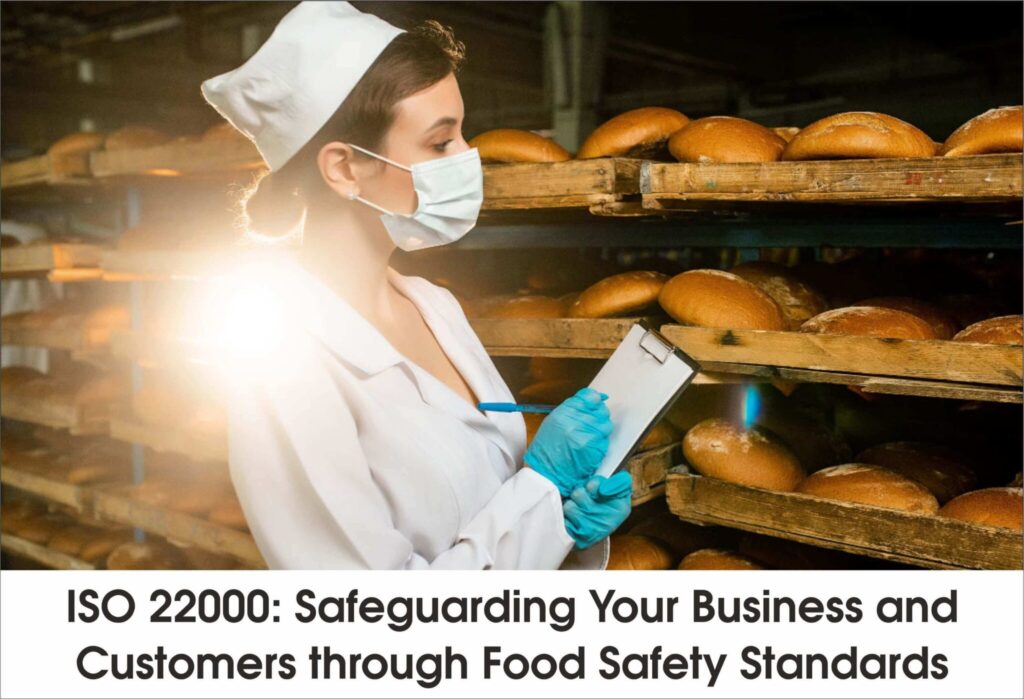
Understanding the Importance of Food Safety in a rapidly growing era. Food safety is very important in the modern society. Customers have become more prudent about the quality and safety of the food they eat as a result of growing health and wellness knowledge and concerns. Consequently, companies in the food sector have to emphasize food safety and follow strict guidelines. Organizations must adhere to strict food safety regulations to be certified by ISO 22000, a globally recognized standard for food safety management systems. Adherence to ISO 22000 standards not only signifies a dedication to delivering secure and superior products but also amplifies client confidence. Enforcing proper procedures at every stage of production—from collecting raw materials to handling, storing, processing, and distributing the completed product—is the goal of the standards and legislation that control the food industry. They also aim to prevent contamination and minimize health risks. By implementing stringent food safety protocols, businesses may safeguard both their brand and the health of their clientele. Today’s customers want responsibility and honesty from the businesses they do business with. In addition to creating trust, proving your dedication to food safety gives you a competitive advantage in a congested industry. What is ISO 22000 and How Does it Ensure Food Safety? The ISO 22000 standard defines the standards for a food safety management system. An ISO 22000-compliant FSMS provides food manufacturers with a systematic strategy and the required tools to control the safety of their goods and services. ISO 22000, as part of the FSMS, requires the establishment of effective communication with interested parties, the implementation of a risk-based approach, the establishment and maintenance of prerequisite programs, hazard control plans (OPRPs and CCPs), the monitoring of FSMS and food safety performance, and the seeking and realization of opportunities for continuous improvement. ISO 22000:2018 integrates and complements the core aspects of ISO 9001 and HACCP to offer an appropriate framework for establishing, implementing, monitoring, and continuously improving a documented Food Safety Management System (FSMS) within the context of an organization’s overall business risks. The Benefits of Implementing ISO 22000 in Your Business ⮯ Organizations that have a strong FSMS in place are better able to react quickly and effectively to problems that might jeopardize the safety of their food. By doing this, they may stop possible contamination and other food safety problems in their tracks. Additionally, the organization can react appropriately to unforeseen events due to the presence of emergency preparedness. Implementing an ISO 22000-compliant FSMS can also boost corporate performance. Organizations may limit the likelihood of product recalls by recognizing and controlling food safety issues, which can be costly and detrimental to a company’s brand. Furthermore, firms that demonstrate a commitment to food safety may be able to differentiate themselves from rivals and attract new customers who value food safety and quality. The standard promotes a methodical approach to discovering, analyzing, and addressing food safety issues. This enables companies to make educated decisions on how to avoid or reduce possible threats. ISO 22000 accreditation displays a dedication to food safety and quality. This can boost consumer trust in the organization’s products and services. ISO 22000 is a globally recognized standard, which implies that enterprises certified to this standard are more likely to be accepted by foreign clients and partners. The Future of Food Safety: Emerging Trends and Technologies As we all are aware the e-commerce sector is expanding rapidly and food safety has become a top priority. With the expansion of the e-commerce sector, food safety has become increasingly critical. It has become very tough to guarantee the safety and quality of the food supply due to the rise of direct-to-consumer platforms and online meal delivery services. An innovative idea with great promise to solve these problems is blockchain technology. Chains from farm to fork may be traced and made transparent with blockchain technology. This enables clients to have complete knowledge about the origin, handling, and transportation of the food products they buy. Delivering perishable commodities within acceptable limits is made possible by blockchain technology, which enables real-time temperature monitoring throughout transportation. Lessening health concerns, also makes it possible to quickly identify and recall tainted or compromised items. Blockchain technology can help businesses increase customer confidence in e-commerce food supply chains by bringing transparency and responsibility to the table. Knowing that the food goods they have purchased have passed thorough safety inspections at every stage of the process will give consumers peace of mind. Additionally, by expediting regulatory compliance procedures, this technology helps firms. Audits become less time-consuming and more effective when precise and unchangeable data are accessible on the blockchain. Conclusion ✅ In conclusion, understanding the importance of food safety is vital for businesses operating in the food industry. By adhering to industry standards such as ISO 22000 and complying with relevant regulations, companies can prioritize consumer well-being while fostering trust and loyalty among their customer base.
Unlocking the Power of Trust: How SOC Certification Ensures Security and Compliance for Your Organization
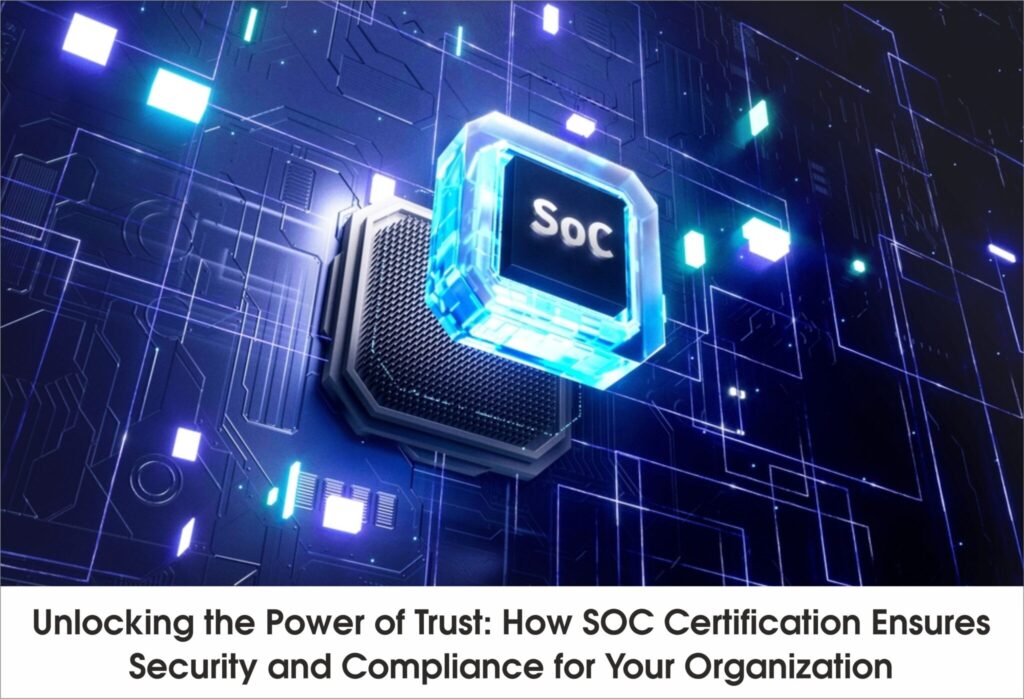
Introduction: Understanding the Importance of Security and Compliance ⮯ In today’s digital landscape, security and compliance have become paramount for businesses of all sizes. With the increasing number of cyber threats and data breaches, organizations must prioritize the protection of sensitive information and maintain the trust of their customers. One way to demonstrate a commitment to security and compliance is through obtaining a SOC (System and Organisation Controls) certification. SOC certifications provide an independent validation that an organization has implemented robust controls to safeguard data and ensure compliance with industry regulations. The importance of security and compliance goes beyond just protecting sensitive data. It also plays a crucial role in building organizational trust. Customers, partners, and stakeholders are more likely to engage with businesses that can demonstrate their dedication to protecting their information. Furthermore, adhering to security standards and regulations helps organizations avoid costly penalties and legal consequences associated with non-compliance. By implementing effective security measures, businesses can mitigate risks, prevent data breaches, and safeguard their reputation. In this section, we will explore the significance of security and compliance in today’s business environment. What is SOC Certification and Why is it Important? SOC (System and Organization Controls) certification is a crucial aspect of ensuring the security and privacy of data for service organizations. It is a set of standards developed by the American Institute of Certified Public Accountants (AICPA) to evaluate the control systems and processes implemented by these organizations. SOC certification provides independent verification that an organization has established effective internal controls and safeguards to protect client data. It assures clients that their sensitive information is handled securely and in compliance with industry best practices. One common type of SOC certification is SOC 2 compliance, which focuses on security, availability, processing integrity, confidentiality, and privacy. A SOC 2 report outlines the controls in place to meet these criteria and assures clients about the organization’s commitment to safeguarding their data. Obtaining a SOC certification demonstrates an organization’s dedication towards maintaining high standards of data security. It enhances trust between service providers and their clients, as it gives assurance that appropriate measures are in place to protect sensitive information from unauthorized access or misuse. The Benefits of Achieving SOC Certification for Your Organization ⮯ There are many advantages to obtaining SOC (System and Organization Controls) accreditation for your business. Some of the main benefits are as follows: Enhanced Trust and Credibility: SOC certification is regarded as the gold standard for data security and proves to stakeholders, investors, and clients that your business takes data security seriously. It improves your reputation in the marketplace. Improved Data Security: A thorough assessment of your organization’s security, availability, processing integrity, confidentiality, and privacy measures is required to acquire a SOC certification. This aids in locating any gaps in your data security and offers recommendations on how to fill them. Reduced Risk of Data Breaches: A SOC certification can greatly lower the risk of data breaches by identifying and resolving flaws in your data security. This could protect your company from significant monetary losses and reputational harm. Compliance with Regulations: Organizations must adhere to specific data security standards in several industries. A SOC certification can be used to show compliance with these rules, possibly protecting you from penalties or other sanctions. Attracting New Business: Numerous companies, especially bigger ones, need certain certifications like SOC from their suppliers and service providers. Thus, having a SOC certification can lead to new business opportunities. Efficiency in Audits: Once you have a SOC report, you may share it with interested parties, auditors, or prospective customers, which eliminates the need for additional audits. This can help you save time and money. Transparency: A SOC accreditation offers insight into your organization’s data security rules and procedures. Client and stakeholder trust may increase as a result of this transparency. Finally, even though obtaining SOC certification demands a time and resource commitment, the advantages it offers in terms of improved security, trust, and business potential make it a worthwhile endeavour for many businesses. How Does the SOC Certification Process Work? ⮯ The SOC (System and Organization Controls) certification process is an essential step for organizations looking to demonstrate their commitment to data security and privacy. This certification assures clients and stakeholders that the organization has implemented effective controls to protect sensitive information. The SOC audit process involves several key steps. First, the organization must identify which type of SOC report they need – either SOC 1, SOC 2, or SOC 3. Each report focuses on different aspects of controls and compliance. Once the type of report is determined, the organization must establish the criteria for SOC certification. This includes defining control objectives and identifying relevant control activities that will be assessed during the audit. These criteria are typically based on industry-specific standards such as ISO 27001 or NIST Cybersecurity Framework. Preparing for a SOC audit involves conducting a thorough assessment of existing controls and identifying any gaps or areas for improvement. This may involve implementing additional security measures, documenting policies and procedures, and ensuring that all employees are aware of their roles in maintaining data security. During the audit itself, an independent auditor will review the organization’s controls against the established criteria. This may involve interviews with key personnel, examination of documentation and evidence, and testing of systems and processes. Upon successful completion of the audit, the organization will receive a SOC report detailing its compliance with relevant control objectives. This report can then be shared with clients and stakeholders as evidence of their commitment to data security. Obtaining a SOC certification involves careful planning, implementation of robust controls, and undergoing a thorough audit process. It is an important step for organizations seeking to build trust with clients by demonstrating their commitment to protecting sensitive information. The Role of SOC Certification in Building Customer Trust and Winning Business Opportunities SOC accreditation is essential for gaining the trust of customers and landing lucrative business possibilities. Organizations that want to show that they are committed to
ISO Certifications for the Education Industry
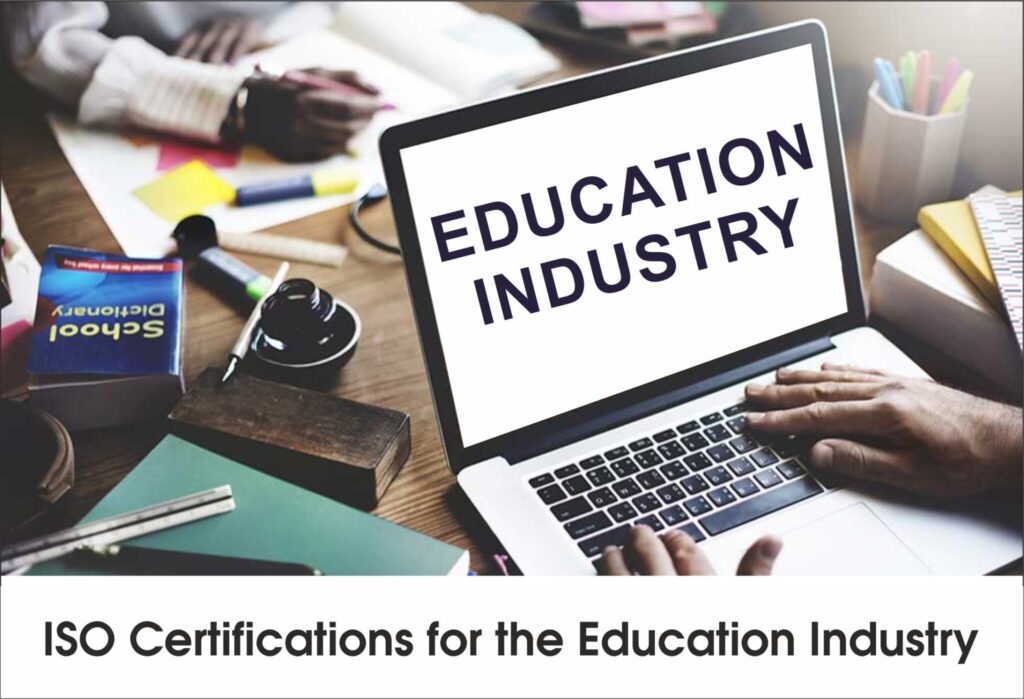
ISO 9001 is an international standard for quality management systems. ISO 9001 is one of the most popular quality management system standards in the world today. It provides a framework for processes to systematically improve all areas of an organization. It is used by a huge range of organizations and is adapted to fit their unique business requirements. It can be applied to any organization, including educational institutions. Here’s how it can benefit an educational institution: Improved Quality of Education: The goal of ISO 9001 is to provide high-quality goods and services. This pertains to education and refers to offering top-notch teaching and learning opportunities. This can be accomplished by developing specific processes for lesson planning, the development of curriculum, training for teachers, and student assessment. Consistency: The standard requires organizations to consistently document and follow their processes. This ensures that all students receive the same education level, regardless of their teacher or class. Continuous Improvement: An obligation to continuously improve is part of ISO 9001. The quality of education may continue to advance as a result of the encouragement given to educational institutions to continuously assess and enhance their procedures. Increased Satisfaction: Educational institutions can boost worker, parent, and student satisfaction by putting a strong emphasis on quality and consistency. This may result in increased enrolment rates, better staff retention, and improved reputation in the community. Risk Management: The standard also emphasises risk-based thinking, which can assist educational institutions in spotting possible hazards and taking steps to mitigate them. Risks relating to student safety, financial viability, or observance of laws could be included in this. Transparency and Accountability: Transparency and accountability can be improved by documenting processes and keeping records as required by ISO 9001. This can increase credibility with stakeholders and make it simpler to show regulatory compliance. Efficiency: Educational institutions can become more efficient by identifying and eliminating unnecessary activities or redundancies. This helps to free up resources that may be used to raise educational standards. Meeting the requirements of the standard is only one part of getting ISO 9001 certification. The goal is to establish a culture of excellence and ongoing improvement that will be beneficial to the educational institution’s stakeholders over the long run. A globally recognised standard known as ISO 14001:2015 outlines the requirements for an Environmental Management System (EMS). Instead of setting environmental performance requirements, it offers a framework that organisations can follow. Implementing this standard will be extremely beneficial to educational institutions. The following are a few advantages: ⮯ Improved Environmental Performance: Institutions can use ISO 14001:2015 to identify, manage, monitor, and control their environmental challenges in a “holistic” way. Resource Efficiency: Institutions can find ways to reduce their waste and energy use by implementing an EMS, which will result in significant cost savings. Compliance with Legal Requirements: The standard lowers the danger of sanctions or legal action by assisting educational institutions in understanding and adhering to pertinent environmental laws and regulations. Enhanced Reputation: The ISO 14001:2015 accreditation shows an institution’s dedication to environmental responsibility, which can enhance the institution’s reputation among students, parents, staff, and the general public. Engagement of Staff and Students: Implementing ISO 14001:2015 can engage staff and students in environmental efforts, promoting a culture of sustainability and environmental awareness. Risk Management: Institutions can take proactive steps to control potential environmental impacts and assure ongoing development by recognising environmental risks and opportunities. Sustainable Development: The ISO 14001:2015 standard encourages organisations to consider all environmental issues that are pertinent to their operations, such as air pollution, water and sewage issues, waste management, soil contamination, mitigation and adaptation to climate change, and resource use and efficiency. Educational Opportunities: Student’s understanding of environmental management and sustainability can be improved through the process of adopting and maintaining an EMS by giving them opportunities for practical training. Stakeholder Engagement: The standard promotes increased participation of stakeholders, especially local communities, on environmental sustainability issues. Competitive Advantage: Having ISO 14001:2015 certification can give educational institutions a competitive edge in a world that is becoming more conscious of the environment, especially when it comes to attracting students and staff who value sustainability. Educational institutions that use ISO 14001:2015 can enhance their environmental performance as well as include sustainability in their methods of teaching and learning. Future leaders and citizens who take responsibility for the environment might reap advantages from this. ISO 45001:2018 is an international standard that offers organisations a framework for enhancing worker safety, lowering workplace risks, and establishing better, safer working conditions. The Occupational Health and Safety Management Systems (OHSMS) are the main area of focus. Implementing ISO 45001:2018 at an educational institution can provide the following advantages:: ⮯ Improved Safety: The main objective of ISO 45001 is to assist organisations in managing risks to occupational health and safety. This entails safeguarding the security of the faculty, students, and visitors by observing potential hazards and acting to mitigate them. Legal Compliance: Institutions can better understand and adhere to their legal and regulatory requirements for health and safety with the support of ISO 45001. By doing this, it may be possible to avoid fines and other consequences of noncompliance. Reduced Accidents and Illness: Institutions may substantially reduce the number of accidents or health problems among staff and students by concentrating on prevention and mitigation. Enhanced Reputation: Being ISO 45001 certified displays a dedication to health and safety. This could improve the institution’s reputation with parents, potential students, employees, and the general public. Increased Productivity: Less absenteeism and turnover result from a safer and healthier workplace, which may boost employee and student morale and productivity. Continual Improvement: The ongoing improvement culture that is emphasised by ISO 45001 encourages regular evaluation and enhancement of health and safety performance. Risk Management: The systematic approach to opportunity and risk management provided by ISO 45001 makes it simpler for educational institutions to anticipate, identify, and handle any operational disruptions. Stakeholder Engagement: The standard emphasises worker input and involvement, establishing a culture of engagement and safety inside the institution. Insurance Premiums: If an organisation
